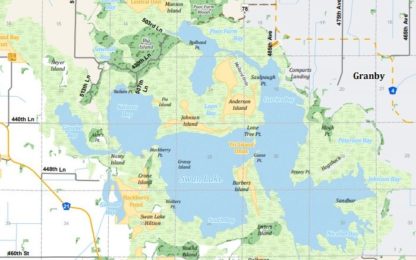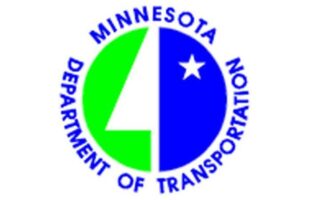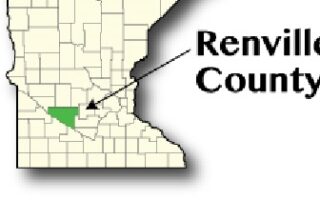Swan Lake drawdown underway
 Wildlife managers with the Minnesota Department of Natural Resources have begun lowering water levels on Nicollet County’s Swan Lake. This temporary drawdown will improve wildlife habitat and water quality.
Wildlife managers with the Minnesota Department of Natural Resources have begun lowering water levels on Nicollet County’s Swan Lake. This temporary drawdown will improve wildlife habitat and water quality.
“The region’s had several years of above-average rainfall, pushing Swan Lake above its ordinary high water level,” said Stein Innvaer, Nicollet area wildlife manager. “The lake has gone 13 years without an extended low water period, and we’re seeing how wind, waves and ice have caused emergent plants to decline.”
Plans call for lowering water levels to 3 feet below the ordinary high-water level, which will allow new growth of emergent vegetation. The lowered water levels mimic a drought, which can “reset” the aquatic community in a shallow lake by consolidating sediment and exposing the seed bed for germination. Lowered water levels also may help reduce common carp populations.
Carp can inflict damage on a lake when they uproot native plants and disturb bottom sediments through their feeding habits. The resulting turbid water conditions release nutrients that feed algae blooms and reduce the amount of sunlight that reaches plants growing on the lake’s bottom.
If precipitation patterns allow, the lake levels will remain lowered for a portion of the 2021 growing season to allow the new plants to get established.
At 10,000 acres, Swan Lake is considered the largest prairie pothole (depressional wetland) in the United States and a premiere waterfowl hunting destination. It also is one of only 60 designated wildlife lakes in Minnesota, a designation that authorizes the DNR to periodically lower lake levels to improve wildlife habitat.
Additional information on lake designation is available at the DNR website. To speak with a wildlife manager at the Nicollet area wildlife office, please leave a brief message at 507-225-3572, and the call will be returned promptly.







